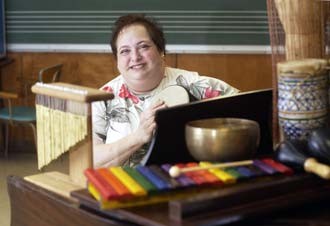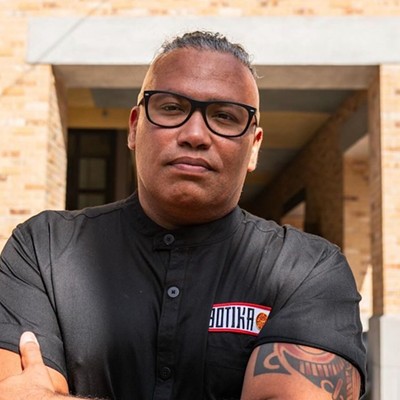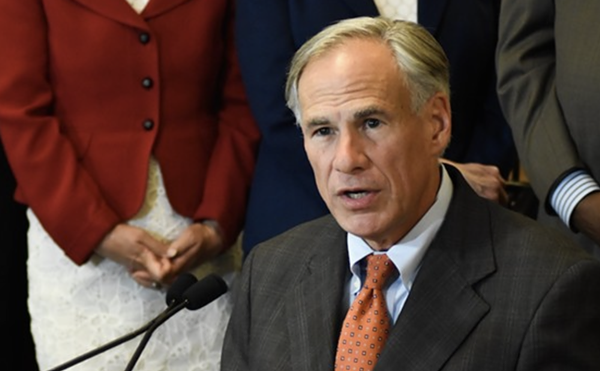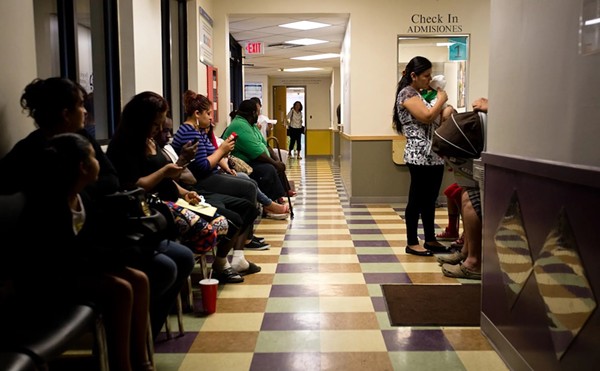Once dismissed as fringe science, music therapy proves it can unlock the mind
Dr. Janice Dvorkin never had much use for the concept of music as a high-minded art form. Dvorkin, a talented player with a facility for piano, derived little excitement and much anxiety from live performance. To her, music wasn't about performers on a stage bestowing their greatness on a passive audience. She believed that for music to fully achieve its potential, it needed to be functional and collaborative.
As an undergraduate at Queens College in New York in the 1970s, Dvorkin concentrated on a career in music education. But during her senior year, she attended an educators conference and saw a music therapist working with autistic children. The approach was primitive by today's standards: an activity in which patients walked around the room in response to a musical recording. Dvorkin, however, saw her future. She enrolled at New York University, earned a master's degree in music therapy and has worked in the profession for nearly three decades. Over the last eight years, she's also served as coordinator for University of the Incarnate Word's music-therapy program, the only such program in South Texas.
| Janice Dvorkin, program director of the music therapy program at the University of the Incarnate Word, plays a small hand drum in a classroom. (Photos by Mark Greenberg) |
The distinctive power of music therapy comes from its ability to break down neurological and emotional boundaries that ordinary therapy can't cross, to create conversations with music for people unable to speak their minds. In the way that it transcends the limitations of mere speech, it taps into the same chemical properties that have long drawn people to music as an art form and a catalyst for dance.
"The brain responds to the organized sound of music, so you will move to the music without thinking about it," Dvorkin says. "You don't have to organize your brain or do anything except let your body do what it wants to do. So they use music with gait training now to facilitate people re-learning how to walk because they don't have to think about putting their feet in front of each other."
For all its proven results, however, music therapy is a hybrid frequently overlooked or misunderstood by non-practitioners. Texas' Medicaid program refuses to fund it; some psychologists and physical therapists view it with suspicion and/or competitiveness because they don't appreciate the amount of study it requires; and music departments don't always know how to incorporate it into their curricula because it's oriented toward clinical interaction rather than concert performance. As Dvorkin says, "I've been doing this 28 years and I'm still educating people about it."
Dvorkin often tells her students about the day that she recognized music's capacity to change lives. She recalls that while training on an adult unit at New York's Bellevue Hospital, "there were a lot of times of just experimenting and wondering, 'Does music really have this kind of power?' I was playing a kind of bland progression for a group of patients standing around and saying, 'Breathe.' I thought it was kind of boring so I decided to change it a bit."
Dvorkin demonstrates by walking to the piano in the corner of her second-floor office and plunking out a sequence of dark, moody chords. From there, she segues into a series of dissonant, unnerving intervals. "Instantly, the mood changed," she recalls. "There was a woman to my side who became highly agitated and looked like she might have a psychotic episode. So one of the patients said they'd get a nurse."
Dvorkin decided that if she could take the woman to that emotional place, she could also bring her back. She reverted to the soothing major chords with which she'd started. "She started breathing with me and I watched her very carefully. So by the time the nurse came in, she said, 'So what's the problem?'"
From that point on, Dvorkin never again doubted music's power as a therapeutic tool.
Hope Young sits at the Texas Music Coalition's July 19 "Careers in Music" panel discussion and offers a quick dose of reality to anyone thinking of jumping into her profession.
Young, founder of the Austin Center for Music Therapy, notes that in a musician-heavy town such as Austin, many people assume that because they can strum a guitar and possess a modicum of empathy they're prepared to join the ranks of practicing music therapists.
"The biggest handicap coming into music therapy is you have to be a trained musician," Young says. In her case, that meant attending a musical conservatory, studying French horn and flute, and concentrating on voice.
Young's mother worked in special education and as an adolescent Young delighted in singing for her mother's students. Like Dvorkin, she learned about music therapy at an educators' conference and saw it as a perfect combination of her musical interests and the work she'd seen her mother perform. But she found college faculty members pulling her away from music therapy - apparently viewing it as a waste of legitimate musical talent - and pushing her toward performance. "You'll hear people say, 'I could make you a real musician if you didn't go into music therapy,'" Young says.
"The musicians don't want to claim you because you're a clinician and the clinicians see you as a musician."
The most common definition of music therapy is that it's a science that uses music for non-musical goals. It always values emotional impact over technical virtuosity and often employs very basic material (solo voice, piano, guitar, or percussion instrument). So why is it so essential for music therapists to be trained, accomplished musicians? As Young sees it, you need a complete palette of musical techniques to manage the range of cases you encounter.
"As a therapist, sometimes I have to pull off an aria like I did in school," she says. "And sometimes I have to husk up my voice to sound like I've been smoking all day."
Incarnate Word's requirements for a bachelor's degree in music therapy intimidate all but the most dedicated students, so it's little wonder that the program only has about 15 students at a given time. Music-therapy majors must complete 28-32 credit hours of music theory and history, 30 hours in music development and performance (including classes in keyboard skills and conducting), 31 hours in music therapy (including piano improvisation), and 19 hours in behavioral/natural sciences (including psychology, anatomy and physiology, and probability and statistics).
Before seeking employment as a musical therapist, all students must also complete six months of clinical work and pass an exam by the Certification Board for Music Therapists (average pay in the Southwest region for music therapists is slightly more than $45,000 a year).
"This is a very intensive program," Dvorkin says. "A lot of bachelor programs are really pre-graduate. Music therapists work once they graduate from here, so this program needs to prepare them to work in any job they can get once they graduate."
The concept of music as a healing entity goes back to the earliest recorded civilizations. But music therapy didn't emerge as a profession in the United States until the 1950s when therapists discovered that soldiers who had returned from World War II or the Korean War with traumatic injuries or brain dysfunction would pay attention if music was played.
"They've found that if you're listening to music, it stimulates your whole brain except the frontal lobe, which deals with impulse and voluntary motion," Dvorkin says. "If you're playing music, it stimulates the whole brain. If there's damage to one part of the brain, other parts of the brain can be used to re-learn skills.
"That's where music was used with stroke patients. Someone would have a stroke and they would understand what you were saying but they couldn't express it. They would tell them to sing what they wanted to say."
In dealing with emotional distress, music therapy often succeeds because it bypasses thought and connects to a patient's feelings. Musicians are known to be the most difficult patients because they're so knowledgeable about what they're hearing that they can defend against their deepest feelings. Over time, a music therapist starts to develop a sense of how pieces of music can unlock an individual's psyche.
| "Sometimes I have to husk up my voice to sound like I've been smoking all day." - Hope Young |
Dvorkin recalls a female patient who had problems with closure and commitment. "In fact, she worked temp jobs," she says. Dvorkin played her an impressionistic piano piece with open, flowing harmonies. "She just loved it, but it didn't have any endings. We were able to really look at not just ending things in harmony but ending things in your life. Do you just keep floating and doing one job to the other, or do you want to be in a place where you begin and have an ending? Had I not taken my theory courses, I could not have shown her that."
On other occasions, while working with patients suffering from depression, she applies the Civil Rights anthem "Ain't Gonna Let Nobody Turn Me Around" to their concerns.
After playing the song, Dvorkin asks group members "Ain't nobody gonna do what to you?" They each relay their pent-up frustrations and let their anger spill out. And as Dvorkin points out, "It's done in an organized, contained way."
Megan Morton, a 2003 graduate of UIW's music therapy program, recalls an early experience at Methodist Children's Hospital in which she softly sang and played guitar for a young girl about to enter surgery. The surgeon later told Morton that the girl required less than the usual amount of anesthesia because of the calming effects of Morton's music.
The well-honed ability to pinpoint an emotional response to a piece of music sets music therapists apart from the many amateur musicians who perform for hospital patients.
"Here in San Antonio we have harpists who go to play for patients," Dvorkin says. "If you asked them why what they do has an effect, they wouldn't be able to tell you.
A music therapist, on the other hand, knows why music works. They know it neurologically and physiologically, so they're able to discuss what they do and why it has an effect with physicians and other medical people. So we're not going by instinct."
Over the years, territorial physicians have sometimes said to Dvorkin "You don't cure cancer," to which she usually replies, "But neither do you." The way she sees it, music therapists work in tandem, not in opposition, with medical professionals. It's a view increasingly adopted by doctors and other health-care workers. "In fact, I had a call from a clinic here in San Antonio," she says. "They had gone to a big conference in Houston for rehab professionals regarding music therapy. They came back and said, 'We've got to have this.' That's the change. Now it's, 'We appreciate what you do, we can't do it, would you come in and work with us?'"
UIW's music-therapy students regularly come to Dvorkin with contemporary songs she's never heard, but she welcomes such material if it taps into the necessary feelings.
"I can bring in a folk song that adolescents have never heard and still use it because I feel comfortable with it," she explains. "My job is to do musically what they can't do at that moment. So I supply the music, but I don't perform it. It's a collaborative effort, and that's what therapy is." •


















